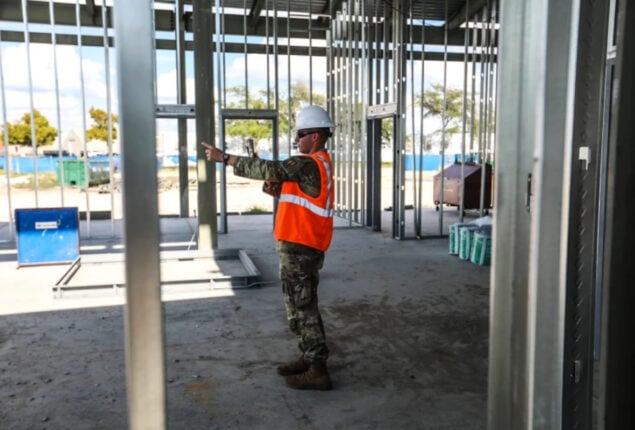Erdogan will discuss Russian Mir payments and possible sanctions
Turkish banks stopped using Russian payment system Mir after US put sanctions...

Florida Airbase is being rebuilt to deal with the effects of climate change
Tyndall Air Force Base in the Florida Panhandle was destroyed by Hurricane Michael in 2018. It was one of only four Category 5 hurricanes to strike the United States.
Now, nearly four years later, the sound of construction mingles with the disorienting. And sometimes overwhelming sound of fighter jets taking off for morning drills. Tyndall, a nearly 30,000-acre military installation that once housed nearly 3,000 people, is being rebuilt. As a first-of-its-kind base designed to withstand stronger storms and the worsening effects of climate change.
Even in the office of Col. George Watkins, commander of the 325th Fighter Wing at Tyndall, a large thud from the construction of a nearby hotel can be heard every five seconds. His office is littered with blueprints and models of what has been dubbed “the future installation.”
The rebuild is the Defense Department’s largest military construction project ever. The base is expected to be completed in 2026 and will cost around $5 billion.
“We’re focused on ensuring that the base is resilient as we rebuild and that we can continue this mission here for many, many years,” he said in an interview.
The base serves a mission that can only be trained on the sunny beaches of Florida. It is the country’s only airspace where the Air Force can train fighter pilots to shoot down dummy fighter jets in the sky and from the ground using rockets. The debris is retrieved from the Gulf of Mexico and reassembled and reused.
“Tyndall has been the heart of air dominance,” Watkins explained. “It’s the foundation of our air power for fighter aviation.”
The fact that a storm could destroy such an important part of US air power emphasises the threat that climate change poses to the military. While some parts of the United States government and private sector have been slow to respond to climate threats, climate risk analysis has become an important part of the military’s future preparations. Climate change has been identified as a threat to national security by the Pentagon, and the Army issued a climate strategy guide in February that included “a roadmap of actions that will enhance unit and installation readiness and resilience in the face of climate-related threats.”
Tyndall is currently being rebuilt to withstand the increased threats.
New buildings that are stronger than what was here before are being built in between makeshift aeroplane hangars and temporary office structures. Engineers from the Air Force built new standards into what now appears to be the bones of a building. Those bones will eventually be protected by armour made of materials designed to withstand a Category 5 hurricane.
“We’re trying to be innovative; we’re experimenting with a lot of new projects,” Watkins explained. “Some of them will be successful, and they will influence how we build Air Force bases and do coastal resiliency in the future, not just on Air Force bases.”
The rebuild, in conjunction with stricter building codes, is utilising the base’s natural habitat as a first line of defence against powerful storms. Tyndall is located on a peninsula, making it especially vulnerable to storm surge, flooding, and wave erosion if a strong storm hits its coast directly.
Catch all the World News, Breaking News Event and Latest News Updates on The BOL News
Download The BOL News App to get the Daily News Update & Follow us on Google News.